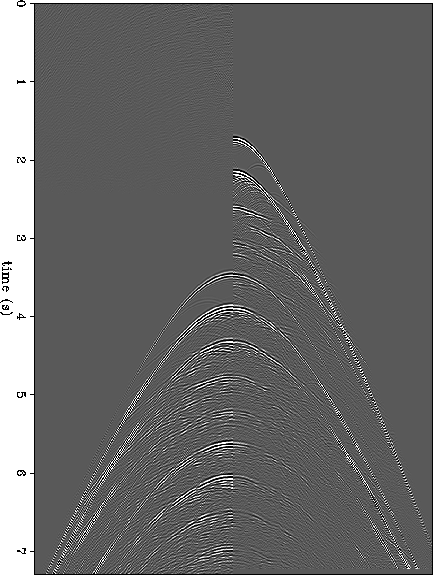




Next: Conclusion
Up: Examples
Previous: Examples
Multiple prediction is the first step in the class of adaptive
multiple suppression methods Verschuur et al. (1992).
In a laterally homogeneous earth, Kelamis and Verschuur (2000) show that
surface-related multiples can be predicted by taking the
multi-dimensional auto-convolution of a common midpoint (CMP) gather.
This auto-convolution reduces to a multiplication in the f-k
domain, and so it can be performed rapidly with multi-dimensional
FFT's.
Since multi-dimensional FFT's can be computed with a one-dimensional
Fourier transform in helical coordinates, we can predict multiples by
wrapping a CMP gather onto a helix, taking its 1-D FFT, squaring the
result, and returning to the original domain.
We tested this algorithm on a single CMP from the synthetic BP
multiple dataset Clapp (1999).
Figure 6 displays the multiple prediction result using the
helical coordinate system and only a single one-dimensional FFT.
Theoretically, only first-order multiples should have correct
relative amplitudes, and the source wavelet appears twice in the
multiple prediction. However, the kinematics of all
multiples are almost exact, even for higher-order multiples below 5 s
two-way traveltime.
BP2
Figure 6 The left panel shows the multiple model
obtained with the helix and a 1-D FFT. The right panel shows the input
CMP gather with the offset axis reversed to facilitate the comparison.
Some wrap-around effects appear at the top of the multiple model.










Next: Conclusion
Up: Examples
Previous: Examples
Stanford Exploration Project
9/5/2000
